When evaluating a horse or mule for saddle fit the first thing we like to look at is the side view of the animal with the rider in the picture. If we have the rider’s measurements it gives us an idea of the overall size of the horse or mule. The other thing we are looking at is the overall length of the back. We know the EQUImeasure is 20 inches long so if we have a picture of the animal with the EQUImeasure on his back we can get a real good idea of how much room we have to work with.
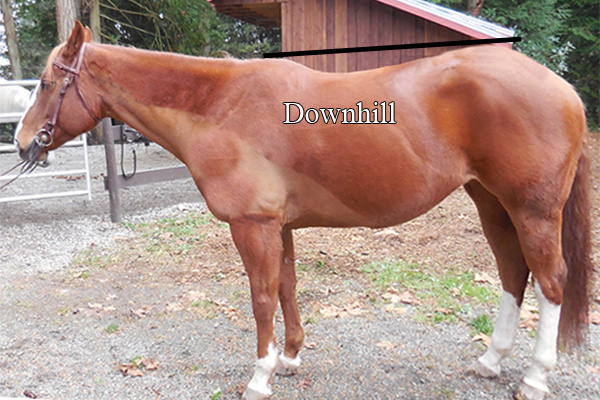
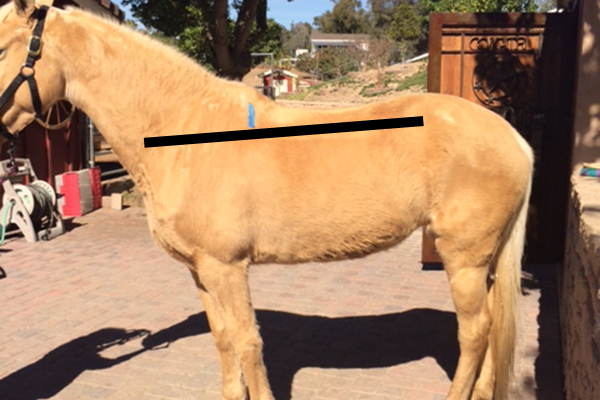 The other thing we can tell from the side view is if the back is level, or downhill. Most people look at the height of the wither compared to the croup. However the saddle doesn’t sit on either of these. Another common way which seems to be a bit more technical is to evaluate the skeletal structure and look at the point of the lower cervical vertebrae compared to the point of the hip. This would mean that almost all horses are downhill. While this is a way to judge certain conformational aspects of the animal, once again, not very helpful as the saddle doesn’t sit here either.
The other thing we can tell from the side view is if the back is level, or downhill. Most people look at the height of the wither compared to the croup. However the saddle doesn’t sit on either of these. Another common way which seems to be a bit more technical is to evaluate the skeletal structure and look at the point of the lower cervical vertebrae compared to the point of the hip. This would mean that almost all horses are downhill. While this is a way to judge certain conformational aspects of the animal, once again, not very helpful as the saddle doesn’t sit here either.
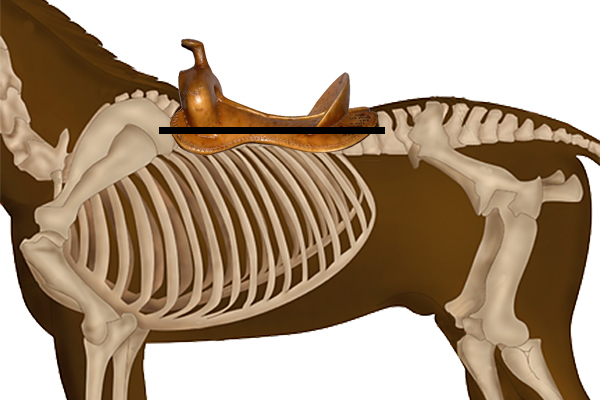 So after getting an overall idea of the animal’s proportions we then focus in on the area where the actual bars of the tree will sit, from the back of the shoulder blade to the area between the end of the ribcage and the hip. How level this area is will determine how the saddle sits.
So after getting an overall idea of the animal’s proportions we then focus in on the area where the actual bars of the tree will sit, from the back of the shoulder blade to the area between the end of the ribcage and the hip. How level this area is will determine how the saddle sits.
Most horse’s we see are actually slightly downhill. The more downhill this area is the more trouble this can cause for the animal as the saddle will put pressure right behind the shoulder blade especially when riding down steep hills. If a horse or mule is still young and the skeleton isn’t fully set yet this might be a temporary condition. These animals tend to grow in spurts. Sometimes coming up in the front and then a year later the hind end catches up or passes the front. This can continue until the horse or mule reaches maturity.
The height of the wither at the back of the shoulder blade is what will determine the gullet height of the tree. Most of us have heard at one time or another that you want 2-3 fingers clearance under the pommel of the tree. The worst thing for your horse or mule is to have the saddle sit too low and not allow them to be able to raise and lower their head without interference. What about the pommel that sits 4 or 5 fingers above the wither? Doesn’t really matter. Some slick fork trees are built very high in the gullet just for looks. Bottom line is enough clearance so the animal can move comfortably on the trail.
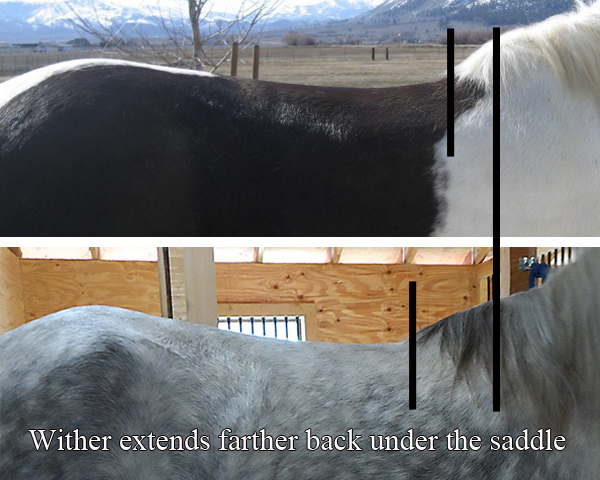 Another thing we look at is how far the wither goes back realative to the shoulder blade. Some slope very quickly and others extend farther under the tree. So we have to make sure that no part of the saddle touches either the top of the spine or wither.
Another thing we look at is how far the wither goes back realative to the shoulder blade. Some slope very quickly and others extend farther under the tree. So we have to make sure that no part of the saddle touches either the top of the spine or wither.
Next time we will go over what information we can get from looking down the horse or mule’s back from behind them.
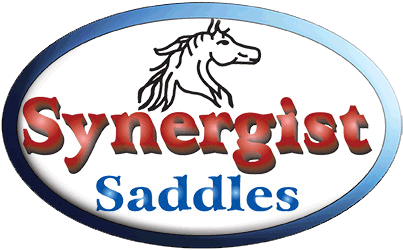
Comments 1
Will be interesting to see how you deal with “downhill” – as I totally believe your observation is spot on – as also the shoulders should not be used to support the weight of the rider – the back of the horse is best designed to carry the weight of the rider.